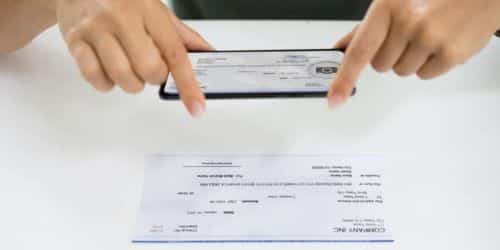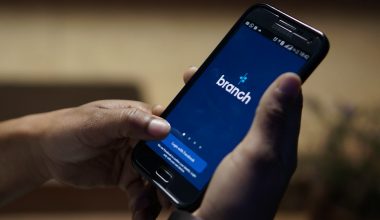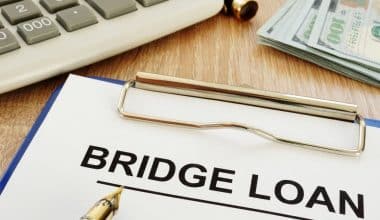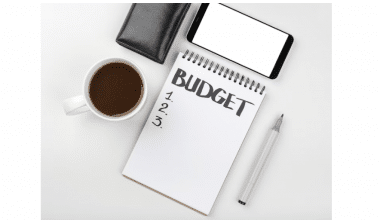With the help of the internet, it is no longer necessary to leave the house to send money to someone, as this can be done online. This can be done via online transfer or sending a money order. Here, we’ll show you a money order works, and how to cash one online. Keep reading.
What Is a Money Order?
A money order is a secure alternative to cash or a personal check that is typically issued by a government or banking organization and functions similarly to a check. A money order can be put into a bank account or cashed.
Money orders are easily accepted and converted to cash, and they are frequently used by persons who do not have access to a traditional bank account. They are a legitimate form of payment for personal and company debts and may be obtained from most institutions for a modest service fee. American Express began issued money orders in 1882, and they later became known as traveler’s checks.
Money orders can be purchased at your local grocery shop, bank, or post office. Paper money orders have some limits, but they are readily overcome. For example, the total cost cannot exceed $1,000, but you may purchase more than one. So, if you need to send $5,000, simply purchase five $1,000 money orders. The US Postal Service charges $1.50 for each order sent to a consumer in the United States, and $10.50 per $700 delivered worldwide. International money orders are limited to $700 ($500 if transferred to Guyana or El Salvador).
One question that arises is this: Is it possible to acquire a money order online? Here’s what you should know
Sending a Money Order Online
The online money order sector is a dynamic one. There are a few websites that offer online money orders, but the majority of them are in countries other than the United States, and both you and the recipient must be in the country to use these services. Other businesses promote online money orders but actually offer money transfers, which are not the same thing even if they can serve the same function.
During a money transfer, the sender sends money electronically to a recipient’s bank account, mobile wallet, or a nearby agent using his bank account or credit or debit card. For example, send money by Western Union. The recipient can pick it up at a Western Union agent (which can be found in many grocery stores, convenience stores, and other locations) or have it sent to their mobile wallet or bank account. This transaction is possible to complete online. The fees for money transfers vary depending on the amount transferred and the destination country.
However, if you wanted to buy a money order, you would have to go to a Western Union agent in person. The money order could then be given or mailed to the receiver. A Western Union money order costs about $1.50 for amounts up to $1,000. In general, purchasing a money order is less expensive than making an online money transfer. Use of a credit card to purchase a money order or make a money transfer can result in significant costs because it is considered a cash advance. You should use cash or make a bank transfer.
Other Considerations
Money Gram operates in a similar manner: Online transaction fees vary based on where the money is going, how much it is, and whether the individual is picking it up or having it sent to their mobile wallet. A money order costs approximately 70 cents for amounts up to $1,000 when purchased in person. A Money Gram money order can also be cashed at Walmart. Many banks will sell you a money order, which you must buy in person. The cost is approximately $5. You could also send money via an app like Xoom, but you’d need a bank account, credit or debit card to do so.
If you come across a firm that offers online money orders, do some research to ensure it is trustworthy, especially if it appears to be newly started. If you are hesitant, you should go to your local bank, post office, or grocery store to purchase your money order in person. It may not be as handy, but it will be less expensive and you will not have to worry about the transaction’s authenticity.
How To Cash A Money Order Online
As we have established, you cannot buy a money order online. However, if you want to cash your money order via other means, here are some steps to take.
#1. Check the information on the money order twice.
When you receive a money order, the first thing you should do is double-check its value to ensure that the amount is proper; money orders are prepaid, so you should know how much you’re receiving ahead of time. Also, ensure that the name on the money order matches the name on your identification.
You should also ensure that the money order is genuine. If you know the sender, this may not be a problem, but if you aren’t sure who is sending it, you should double-check that it is what it should be.
#2. Determine where you will cash your money order.
A bank, credit union, grocery store, post office, retail store, or some convenience stores are examples of locations.
To make the transaction more convenient, many retail outlets include a Moneygram or Western Union counter. Many people submit money orders through the United States Postal Service, and a local post office will cash them.
Bring your money order to a business that will cash it, and be prepared to pay a fee. According to SmartAsset, you may be able to reduce your fees if you go directly to the location that issued your money order (which might be a location like Western Union, Moneygram, Walmart, or USPS).
Going straight to the issuer is also a means to verify the money order – if you cash or deposit a phony money order with your bank, the transaction can be reversed.
If you cash with a bank or credit union where you have an account, you may not have to pay any fees at all, and you may also be able to avoid fees by cashing a USPS money order at a USPS store.
#3. Make a plan to pay your money order as soon as possible.
The longer you keep the money order, the more likely it may be lost, destroyed, or misplaced.
Furthermore, cashing a money order swiftly protects you against any fraud because the sender might cancel their money order. They won’t be able to cancel it if you’ve already cashed it with the issuer.
#4. Bring valid identification with you while cashing the money order.
A picture ID, such as a driver’s license, passport, or other government-issued ID, will be required. To cash a money order, you must show identification.
#5. Endorse your money order by signing the back of it.
Don’t sign the money order ahead of time; instead, sign the back of the money order when you get to the counter. “Sign your money order only after it has been handed over to be cashed.” “Signing it ahead of time can be dangerous if it is stolen,” warns Steiner.
#6. Recognize that you will be charged service costs, which will be taken from the amount you collect.
Fees are often minor – a few dollars or a percentage of the total.
#7. Store the cash you receive before leaving the counter, and keep your receipt.
Count the money you receive and make a note to obtain and retain your receipt.
To keep the cash safe, secure it before leaving the location.
#8. Inform the sender that their money order has been successfully cashed.
You are not required to notify them. However, you may want to consider informing the sender that your transaction has been completed.
Alternatives To Money Order Online
#1. Electronic Transactions
If you routinely use money orders to pay monthly expenses such as utility bills and rent, the recipient is likely to have an electronic payment system.
In most cases, you can pay your utility payment online using a credit card, debit card, or your bank account and routing numbers.
Electronic payments may cost a modest fee (about $2.50 or less), but they are sometimes free under certain situations, saving you money when compared to purchasing a money order.
Some online rent payment systems, for example, levy a small fee if you pay with a credit card but waive the price if you pay with your bank account and routing codes.
Even though the payment mechanism charges a fee, it may be less expensive than obtaining a money order. Depending on the source, money order fees might range from $3 to $6.
Furthermore, because online payments may be made from your smartphone or computer, you may save time or find them more convenient than purchasing money orders in person.
#2. Money Transfers
Money transfers allow you to send money to another person’s bank or payment account, or to send money to an agent location for cash collection.
Various companies offer transfer services, allowing you to locate fee-free, high-limit, and no-bank alternatives to money orders based on your needs.
For example, if you and/or the recipient do not have bank accounts, you can send money using PayPal (but both of you must have current PayPal accounts).
Money transfers, which are more flexible than money orders, can also be made online or in person.
Payment programs like PayPal, Cash App, and Venmo, as well as transfer services like Zelle and Xoom, are available online. For more information on sending money online, see our prior research.
In-person transfers are available at Western Union and MoneyGram agent locations, as well as between Walmart stores (as previously stated).
#3. Cashier’s Checks
Cashier’s checks are similar to money orders in that they are paid for in advance and do not contain personal information such as your bank account number.
These checks typically have high-value restrictions, making them an excellent option for money orders if you need to pay more than $1,000.
It should be noted that many banks require you to have an account in order to obtain a cashier’s check, however, some may accept cash from non-customers.
#4. Personal Checks
Personal checks, unlike money orders, require a bank account, although they are often a safe and inexpensive way to send money.
You will not be charged any costs to write and send a check; instead, you will need to purchase a book of checks from your bank’s check supplier if you do not already have some on hand.
If you don’t currently have a bank account, you might want to consider opening one with free checks.
#5. Prepaid Cards
Prepaid cards, like money orders, are secure and can be used anonymously.
If you need to pay a friend or family member, you should consider obtaining a prepaid card. Prepaid cards can be a smart alternative if you frequently use money orders for purchases, monthly expenses, and rent.
Because prepaid cards are reloadable, you can add money to the card balance instead of purchasing a money order each time you need to make a payment.
Can I Buy A Money Order Online With A Debit Card?
Yes, a money order can be obtained with a debit card. You can also pay in person with cash or utilize one of the online platforms provided by money-order businesses to complete the process online.
What Is The Limit On A Money Order?
You can send up to $1,000 in one order to any location in the United States.
Can I Buy A Money Order Online Using Paypal?
No, because a money order cannot be purchased online. You can transfer monies from your PayPal account to a bank account and then use the funds to purchase a money order at an ATM or bank. You can also buy one with your bank debit card at any establishment that sells money orders.
Related Articles
- EQUIPMENT FINANCING: Definition, Companies & How it Works
- How to Fill Out a Money Order Correctly: Step by Step Guide
- How to Send Money Online Instantly in 2023(+Top 10 money transfer apps )
- ONLINE MONEY ORDER: How to Buy, Send & Cashout Online Order






